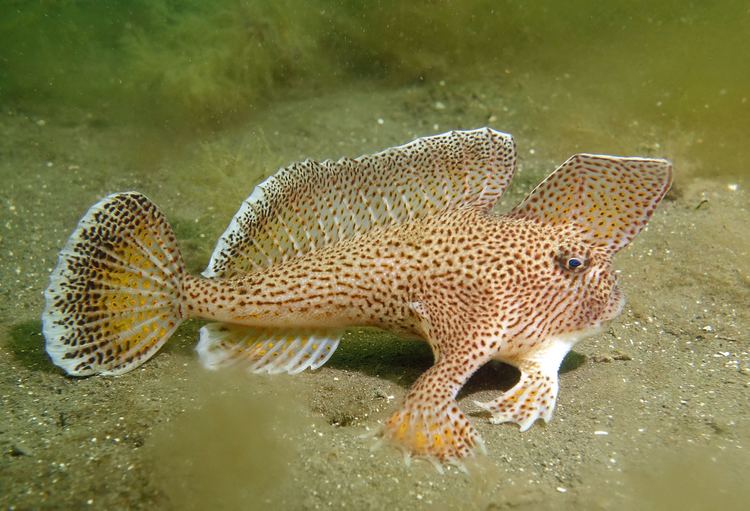Rank Species | Scientific name Brachionichthys hirsutus Higher classification Brachionichthys Order Anglerfish | |
 | ||
Similar Handfish, Anglerfish, Actinopterygii, Asterias amurensis, Hairy angler | ||
Spotted handfish brachionichthys hirsutus tasmania australia
The spotted handfish (Brachionichthys hirsutus) is a rare Australian fish from the family Brachionichthyidae. It is classified as Critically Endangered on the IUCN Red List 2002. It is a benthic fish usually found at depths of 5 to 10 m, with overall sightings varying from a minimum of 2 to a maximum of 30 m deep. The spotted handfish is unusual in that it has highly adapted pectoral fins, which appear like hands (hence the name) and allow it to walk on the sea floor. It has a highly restricted range, being found only in the estuary of Derwent River, Tasmania, and nearby areas.
Contents
- Spotted handfish brachionichthys hirsutus tasmania australia
- Spotted handfish with eggs
- Description
- Diet
- Reproduction
- Preservation concerns
- References
Spotted handfish with eggs
Description
The handfishes are a unique, Australian family of anglerfish, the most speciose of the few marine fish families endemic to Australia. Handfish are unusual, small (up to 120 mm in length), slow-moving, benthic fishes that prefer to 'walk' rather than swim. Their pectoral fins are leg-like with extremities resembling a human hand (hence their common name). Females are believed to reach sexual maturity after two to three years at lengths of 75–80 mm.
Diet
Currently, little is known regarding their diet, but they have been reported to prey on small shellfish, shrimp, and polychaete worms in the wild. When captive in aquaria, spotted handfish eat mysid shrimp, amphipods, and small live fish. Newly hatched handfish have been observed to do quite well on a diet of small amphipods.
Reproduction
The species spawns sometime during September and October. Females lay a number of eggs varying from 80 to 250 eggs on a variety of vertical objects, including sea grasses, sponges, macrophytic algae, polychaete worm tubes, and stalked ascidians.
Preservation concerns
The most urgent matter concerning the survival of the species is to address the nuisance threat posed by the presence of an introduced species of starfish (Asterias amurensis), which prey on the fish eggs.
